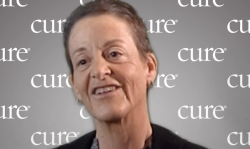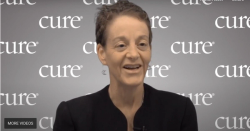- About Us
- Advertise / Support
- Editorial Board
- Contact Us
- CancerNetwork.com
- TargetedOnc.com
- OncLive.com
- OncNursingNews.com
- Terms & Conditions
- Privacy
- Do Not Sell My Information
- Washington My Health My Data
© 2025 MJH Life Sciences™ and CURE - Oncology & Cancer News for Patients & Caregivers. All rights reserved.
Help Children Learn to Cope With Cancer Risks Through Open Conversations

Antonia DePace, Editor for CURE®, has covered medical news for MJH Life Sciences, CURE®’s parent company, since 2021. She has written for EatingWell, Natural Awakenings Greater Boston, The Boston Globe and a variety of other lifestyle publications. She attended Emerson College, where she studied journalism and publishing. Antonia enjoys traveling, cooking, yoga and all things health and wellness. Follow her on Instagram @antonialdepace or email her at adepace@curetoday.com
While sparking a conversation about cancer risk after a family diagnosis is hard, one expert said that there are benefits — especially when using specific tactics.
Speaking to children about a possible genetic risk of cancer is difficult but important, according to a presentation during the 12th Annual Joining Forces Against Hereditary Cancer Conference.
Karen Hurley, a psychologist at Cleveland Clinic in Ohio, presented further on the topic, highlighting best practices and benefits of being honest with children.
“We're all subject to random events, we're all subject to hard times and we're all subject to mortality, whether or not we carry a particular risk mutation,” she said during the presentation. “Given those facts, the legacy that you can give to your children are these life's lessons about what do you do when life gets hard, what do you do when things are uncertain, when there are things that are out of your control, when you have to make really tough decisions that no one would have to make, when you have to deal with really strong or painful feelings. These are things that you have to offer your child that go well beyond the effects of one particular mutation that allows them to meet any challenge in life that they might face.”
The Importance of Talking to Children
While an immediate response for most parents will be to protect their children by not telling them about a diagnosis, Hurley said that focusing on the element of trust is more constructive in tougher times so that it gives families a chance to connect and grow.
“Sometimes parents will shield children from information, but what happens then is that with the information not being shared, then it becomes isolating rather than having an opportunity to bring the family together. In particular, parents who say things like, ‘Let her have her college years,’ or ‘Just let him get through his senior year,’ and then the child finds out later that there was information that could have been shared. This can lead to feelings of betrayal or feelings of mistrust. 'Well, if you didn't tell me that, what else are you not telling me?' So then it requires some restorative or reparative work. It also — especially with the adult children — denies them the opportunity to grow by not telling them information, because you're afraid it's going to hurt them in some way. Then they don't have that opportunity to rise to that occasion, to dig down and find coping skills that maybe they didn't know they had before.”
Most children, Hurley noted, despite their age, will also pick up on the environmental changes that come from a cancer diagnosis, especially as they see parents going to the doctor more frequently or if someone has to have a surgery. But this can be used as a benefit when discussing hereditary cancer risks. “Another thing is — because children may have at least started to piece things together, especially the older ones — to ask what they already know or what they've noticed, and then build on that way if they have some assumptions or misinformation, you have an opportunity to bring that out and correct it,” she explained, noting that it is important to follow the child’s lead on how much or little information they want to know at that time.
Navigating the Conversation
Hurley emphasized two important aspects to consider when preparing to speak to a child about cancer risk. The first is practicality around what words to use and how much information to give. She added, “Some general principles are to think about both the child's numeric age but also their maturity level. What can they handle? What’s the minimum amount of information that they need to get through the next period, understanding that you may elaborate on that information as they get older.”
The second aspect is navigating one’s emotional status before going into the conversation.
“If you're going into a conversation about risk, you want to take care of your feelings first so that you're fully available to focus on the child's feelings and needs in that conversation. The example of putting your oxygen mask on first before helping others, it’s a common one to say, you need to take care of yourself first,” she said. “If we take this as a metaphor, what does that actually translate into? It means processing your own feelings about your genetic risk first, whether that's guilt, sadness, fear, anger (or) helplessness, all of the above or other feelings that I haven't mentioned.”
Hurley recommended having at least one adult, whether it be a partner, friend or family member, as a support system who can be a go-to for help or a hand to hold.
She concluded, “Putting your own mask on first is a very important task as a parent, easy to say, harder to do. Go ahead and take your time. It's worth spending a little extra preparation time, maybe even seeking out some guidance from a physician, a social worker, a psychologist, some trusted professional. Trust your own knowledge of your child, and to take that guilt that you feel about wanting to protect your child to thinking about what do you want to teach your child about coping with challenges in life.”
For more news on cancer updates, research and education, don’t forget to subscribe to CURE®’s newsletters here.
Related Content:




